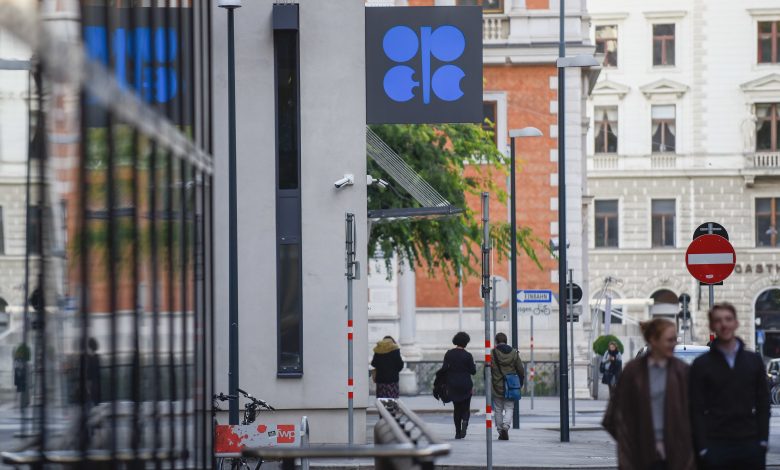OPEC+ awaits approval for biggest oil supply cut since 2008 crisis

[ad_1]
The logo of the Organization of the Petroleum Exporting Countries (OPEC) at the headquarters.
Omar Marques | LightRocket | Getty Images
A group of some of the world’s most powerful oil-producing nations has recommended the deepest production cuts since the global financial crisis, as intensifying concerns about China’s fast-spreading coronavirus ratchets up the pressure on oil prices.
At a meeting in Vienna, Austria on Thursday, OPEC announced it had agreed to impose production cuts of 1.5 million barrels per day (bpd) from the beginning of next month until the end of the year, with a meeting on June 9 to review this policy.
The deal is conditional on approval from Russia — a non-OPEC member. It will be applied on a pro-rata basis with core OPEC members set to cut 1 million bpd and non-OPEC partners expected to cut 500,000 bpd.
The broader alliance of OPEC and non-OPEC producers, sometimes referred to as OPEC+, will meet on Friday to discuss this proposal.
“It is truly a go big or go home moment for this organization,” Helima Croft, head of global commodities strategy at RBC, told CNBC’s Dan Murphy on Friday.
“Russia so far has not given their answer and so I think a lot is on the line. I mean, if Russia says no today, there are real questions about the viability of the OPEC+ arrangement.”
International benchmark Brent crude traded at $49.12 Friday morning, down over 1.7%, while U.S. West Texas Intermediate (WTI) stood at $45.23, around 1.4% lower.
Brent has fallen almost 25% since climbing to a peak in early January, with WTI down more than 30% over the same time period.
‘No reason’ to doubt Russia’s commitment
RBC’s Croft said she believes it is likely Russia will sign up to the cuts, given it is in both the economic and political interests of Moscow’s to stay in the organization, “but a lot is up in the air right now.”
Russia has been cagey about its views on deeper production cuts, with Moscow reportedly in favor of an extension to the current level of cuts rather than an additional reduction.
The apparent disconnect between OPEC kingpin Saudi Arabia and non-OPEC leader Russia is expected to test the strength of their three-year energy alliance once again.
OPEC Secretary General Mohammed Sanusi Barkindo (L), Saudi Arabia’s Energy Minister Prince Abdulaziz bin Salman (C) and Russian Energy Minister Alexander Novak (R) attend an Opec-JMMC meeting in the UAE capital Abu Dhabi on September 12, 2019.
KARIM SAHIB | AFP via Getty Images
“We have no reason to doubt the continued commitment of the Russian Federation to this partnership,” OPEC Secretary General Mohammed Barkindo told reporters Thursday evening.
“We have repeatedly heard from the highest level of government in the Russian Federation of the commitment of the government to this partnership in the declaration of cooperation,” he added.
Speaking to reporters shortly after OPEC recommended taking 1.5 million bpd off the market for the remainder of the year, Iranian Oil Minister Bijan Zanganeh conceded the group had “no plan B” if Russia or any other non-OPEC members refused to accept the deal.
How did we get here?
If Russia and other non-OPEC producers approve the group’s recommendation on Friday, total output cuts would amount to 3.6 million bpd — approximately 3.6% of worldwide production.
The last time OPEC+ reduced supply on such a scale was in 2008 when it took 4.2 million bpd off the market to support oil prices in the wake of the financial crisis.
The oil producers first committed to curtailing their collective production policy back in 2016 in an effort to bolster prices, with the deal coming into force in January 2017.
In December 2019, it was extended and the alliance agreed to curb oil output by approximately 1.7 million barrels per day. Saudi Arabia then opted to cut its own production voluntarily by an additional 400,000 b/d for three months, should fellow members stick to their commitments.
— CNBC’s Holly Ellyatt contributed to this report.
Source link






